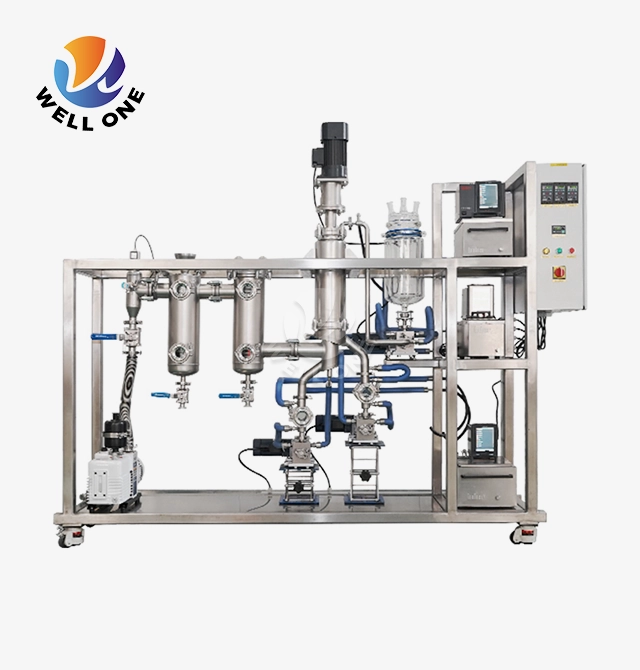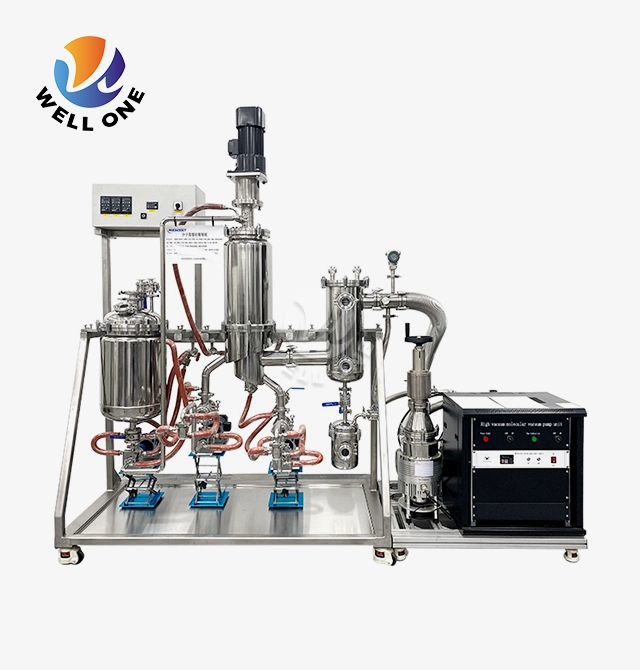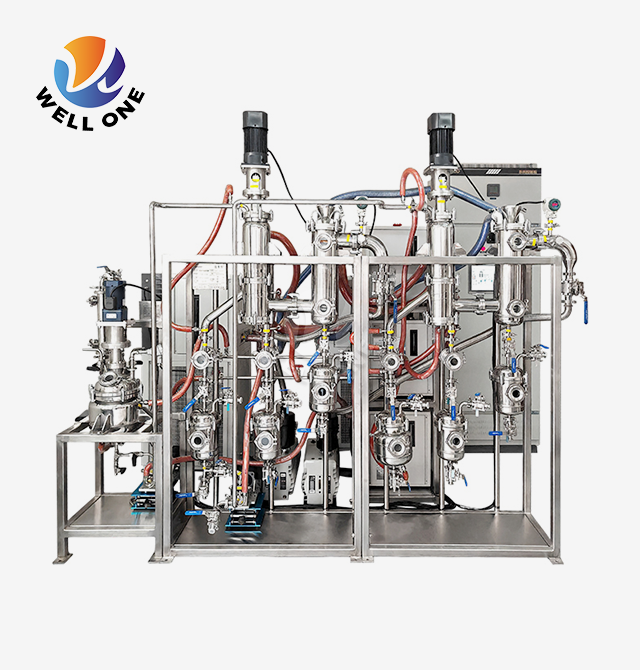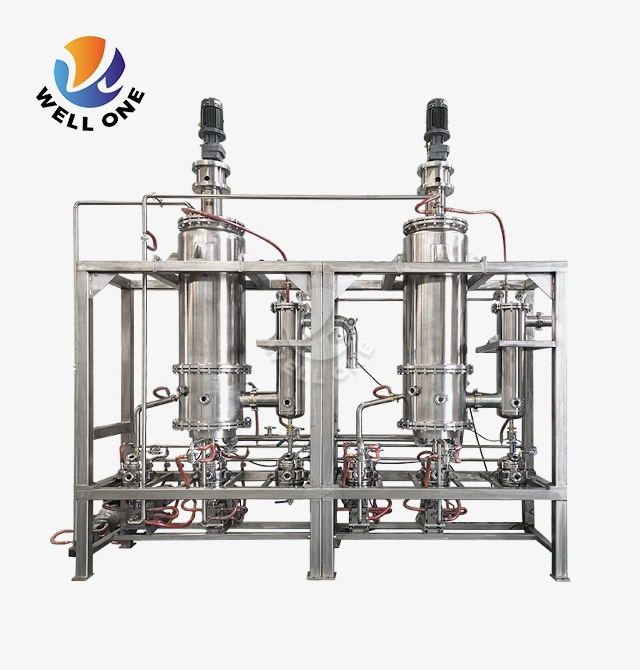What Are The Advantages Of Using Thin Film Distillation Equipment?
Thin film distillation is a widely used distillation technique across various industries including pharmaceuticals, food and beverage, perfumery, and petrochemicals. The technology has been around since the early 20th century and provides an efficient method of separating and purifying components from liquid mixtures. This article will explore the historical background of thin film distillation and provide an overview of the key benefits associated with using thin film distillation equipment in industrial applications.
The purpose is to highlight the versatility, effectiveness, and advantages of thin film distillation for producing high purity compounds. We will cover the basic principles of thin film distillation, compare it to other techniques, discuss applications across different industries, and provide recommendations on selection and usage of thin film distillation equipment. With its unique capabilities, thin film distillation can be an invaluable tool for many manufacturing and extraction processes.
What is Thin Film Distillation Equipment?
Thin film distillation involves the condensation and evaporation of liquid compounds in a specialized distillation apparatus. The distinguishing component is a heated rotating wiper blade inside the evaporator section. This blade spreads the feed mixture into an extremely thin film against the heated wall of the evaporator. The large surface area created accelerates the rate of evaporation and allows for rapid and gentle separation.
Vaporized compounds are condensed on cooled collection plates on the other side of the apparatus. The components can then be collected in their purified forms based on their respective boiling points. Thin film distillation units are constructed from specialized materials like glass, Teflon, or stainless steel to prevent product contamination. Units can range from laboratory scale to large industrial capacity.
There are a few different configurations of thin film distillation equipment. These include vertical orientation with top feed, vertical orientation with bottom feed, and horizontal arrangements. The optimal setup depends on the type of feed material and desired throughput. Manufacturers can provide guidance on equipment selection and customization.
The Advantages of Thin Film Distillation Equipment
Thin film distillation provides significant advantages over other separation techniques in many situations. Key benefits include:
- Production of extremely high purity compounds. Thin film distillation can separate components with very close boiling points. Distillate purities over 99% are possible.
- Preservation of heat-sensitive materials. The rapid evaporation and condensation minimizes thermal degradation of heat-labile compounds.
- Capability to process viscous or fouling materials. The wiping blades prevent material build-up.
- Short residence times. Thin films allow for flash distillation, reducing exposure to thermal stress.
- High efficiency and capacity. Large surface area to volume ratio gives high throughput with modest equipment size.
- Flexible scale of operation. Thin film units can handle laboratory sample sizes up to industrial-scale production.
- Low operating costs. No internal packing means lower energy input and minimal maintenance.
- Easy to clean and sanitize. Smooth equipment surfaces simplify cleaning procedures.
For these reasons, thin film distillation can outperform conventional fractional distillation, steam distillation, or molecular distillation for many applications. The technology excels when the goal is to gently purify heat-sensitive or viscous liquid feeds on any scale.
Applications of Thin Film Distillation Equipment
Thin film distillation equipment has widespread utility across many industries. Some common applications include:
Pharmaceutical Industry
- Purification of prescription and over-the-counter drugs
- Isolation of active pharmaceutical ingredients
- Processing of fermented pharmaceutical products
Food and Flavor Industry
- Concentration of fruit and vegetable juices
- Processing of edible oils and fats
- Purification of vitamins, antioxidants, and nutraceuticals
- Extraction of flavor and fragrance compounds
Chemical Industry
- Separation of heat-sensitive petrochemicals
- Purification of lubricants and plasticizers
- Processing of monomers for polymer production
- Manufacture of specialty organic chemicals
Other Applications
- Purification of liquid fuels
- Treatment of waste oils and hazardous chemicals
- Desalination and water purification
- Research and testing labs
With the appropriate equipment selection and operating conditions, thin film distillation can assist with the separation, purification, and processing needs across all these fields.
Comparison with Other Distillation Techniques
To fully appreciate the benefits of thin film distillation, it is helpful to compare against conventional distillation methods.
Simple distillation – This basic technique cannot effectively separate compounds with close boiling points. Purity is limited, and mixtures must be relatively dilute.
Fractional distillation – Although better than simple distillation, fractionation columns still require high reflux ratios and repeated vaporization/condensation to get pure compounds. Throughput is lower.
Steam distillation – Steam must be continually injected to maintain temperature. Can cause hydrolysis of compounds. Not as effective for higher molecular weight, low volatility materials.
Molecular distillation – Uses high vacuum instead of temperature to lower boiling points. But material overheating can still occur, requiring careful feed rate control and limiting throughput.
In contrast, thin film distillation overcomes these limitations by offering flash evaporation, higher throughput, and gentler separation of complex feeds. Capital and operating costs can be lower as well. The technology fills an important niche across many purification processes.
How to Choose and Use Thin Film Distillation Equipment
To leverage the full potential of thin film distillation, the equipment must be selected and operated appropriately for each application. Here are some key guidelines:
- Choose the proper feed tube size to control film thickness. Thinner films improve separation efficiency.
- Select materials compatible with the compounds to be processed. Consider corrosion resistance and product purity.
- Match the condenser size, cooling media and vacuum level to optimize conditions.
- Control feed rate to prevent excess accumulation of condensates.
- Use continuous feed and distillate take-off for best results. Batch methods are slower.
- Implement pre-filtration to remove solids and prevent fouling of feed tubes.
- Schedule regular cleaning and sanitization based on the feed material.
- Work with knowledgeable vendors to size units appropriately for desired throughput.
- Monitor distillate purity; adjust conditions if separation is insufficient.
With a fundamental understanding of these guidelines, thin film distillation equipment can be incorporated seamlessly into many production environments. Proper selection, operation, and maintenance are key to realizing the advantages of this technology.
Conclusion
Thin film distillation has proven to be an extremely valuable separation process across a broad range of demanding industrial applications. The technology offers high purity, gentleness, and flexibility unmatched by standard distillation techniques.
With a vaporizing thin film and rapid flashing rates, thin film distillation reliably handles heat-sensitive, viscous and fouling feeds. It can purify compounds to the highest specifications regardless of scale. These capabilities make thin film distillation ideal for the pharmaceutical, chemical, food, flavor, and other industries.
By reviewing equipment configurations, applications, and usage guidelines, processors can determine if thin film distillation is suited to their needs. Where high purity, mild processing, and efficient separation are required, thin film distillation should be considered. With the right expertise and approach, this technology can resolve many challenging fractionation needs.
Xi'an Well One Chemical Technology Co., Ltd. is dedicated to delivering top-quality products, and our Short Path Evaporator is a testament to our commitment. Renowned for its guaranteed quality and widespread application, our Short Path Evaporator is designed to meet the diverse needs of our clients. With 17 years of production and manufacturing experience, we offer exceptional OEM & ODM services, ensuring that users receive the desired appearance design, supported by our team of 3D design engineers capable of providing captivating 3D animation designs.
At Well One, we prioritize customer satisfaction and are proud to serve as the exclusive export agency authorized by NewSet since 2006. Our focus lies in providing a comprehensive range of products, including experimental level molecular distillation devices, pilot level molecular distillation devices, industrial level molecular distillation devices, and multi-level continuous use systems. If you have any demand for our Thin Film Distillation Equipment or require assistance in finding the right product for your needs, please feel free to contact us via mobile at (+86) 18191320360 or email us at info@welloneupe.com. We are dedicated to offering superior service and look forward to meeting your requirements with precision and expertise.
References
Eggers, R., & Sievers, U. (2002). Thin-film and wiped film distillation-State of the art. Chemical Engineering and Processing: Process Intensification, 41(6), 551-562.
Jarray, A., & Dhib, R. (2018). A review on thin film distillation: An emerging technology for enhanced volatile concentration. Journal of Chemical Engineering & Process Technology, 9(4).
Löwe, K., Stieber, A., & Hofmann, M. (2022). Thin film distillation equipment for laboratory and pilot plant use. Chemical Engineering & Technology, 45(4), 775-784.
Mourouzidis-Mourouzis, S. A., & Karabelas, A. J. (2006). Wiped film distillation of fish oil fatty acids. Journal of the American Oil Chemists' Society, 83(6), 471-483.
Ndiaye, P. M., Xu, S., & Wang, Z. (2011). Reactive distillation by thin film evaporation. Reviews in Chemical Engineering, 27(5-6), 221-232.
Pangarkar, V. G., Sane, A. J., Parjane, S. B., & Sakhare, R. S. (2002). Vacuum distillation cum wiped film evaporation. Chemical Engineering and Processing: Process Intensification, 41(6), 563-572.
Soulies, A., Perrin, E., & Guillotin, M. (2002). Pilot plant experiments of the concentration of aqueous solutions and beverages by thin film distillation. Chemical Engineering and Processing: Process Intensification, 41(5), 393-397.







